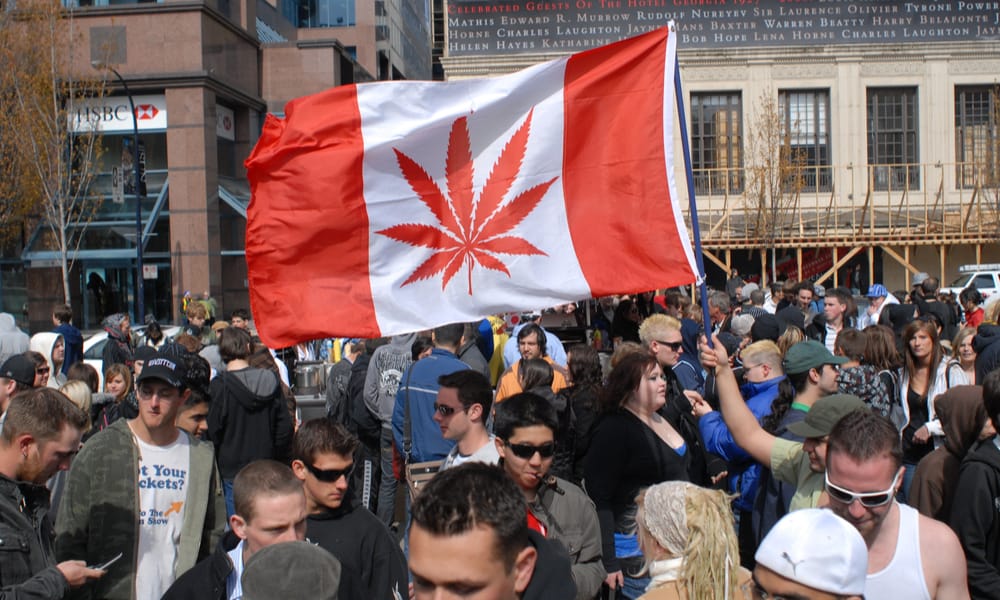Canadians Spend Nearly A Billion Dollars On Recreational Cannabis In First Year Since Legalization
FeaturedTrending Stories December 13, 2019 MJ Shareholders 0

It’s been a little over a year since Canada legalized recreational weed across the entire country. Throughout that year, a lot has changed and evolved in the country’s legal cannabis industry.
Now, new stats show exactly how much Canadians have spent on recreational weed. According to the new numbers, which come from Statistics Canada, the country as a whole spent just under $1 billion in year one of legalization. That works out to be roughly $24 per Canadian.
New Stats Put Number on High Demand for Legal Weed
The new data covers October 2018—the month that weed became legal in Canada—through September 2019, covering almost one year exactly.
In that time frame, Canadians spent $907,833,000 on recreational marijuana. This number is helpful, as it puts a specific amount on what had previously been recognized only very generically as a year of very high demand for recreational weed.
Recreational cannabis officially became legal in the country on October 17, 2018. Right away, there was massive demand. So much so, in fact, that shops and online retailers around the country started running out of product.
In the months immediately following legalization, there were predictions of months-long supply shortages. Many of those concerns came from the fear that cultivators and producers wouldn’t be able to harvest fast enough to restock shelves at retailers.
Based on a province by province breakdown of purchases, demand was the highest in Yukon. There, per capita sales came in at $103 per person. Prince Edward Island was the second highest. The average in that territory was $97 per person.
On the other end of the spectrum, British Columbia had the lowest per capita purchases, coming in at an average of only $10 per person.
Brick and Mortar vs. Online Retailers
One of the interesting details highlighted in the new stats is the difference between brick and mortar retailers and online sellers.
In some provinces, the only place to purchase legal weed is on province-run websites. Meanwhile, other provinces allow for brick and mortar shops to sell legal weed.
Taken as a whole, Canada saw a steady increase in the number of brick and mortar stores throughout the first year of legal weed.
Specifically, Statistics Canada said there were 217 physical retail stores in March 2019. Just a few months later, in July 2019, there were 407 brick and mortar shops.
Interestingly, access to physical retailers appeared to draw a significant portion of business away from online sellers.
More specifically, stats show that as the number of brick and mortar shops increased during the year, the market share of online sales fell from 43.4 percent in October 2018 all the way to 5.9 percent in September 2019.
“While online cannabis retail ensures access to all Canadians regardless of proximity to a physical store, accessibility continues to improve as more stores open across the country,” the report said.
How close people live to a retail store varies province to province. That’s especially true in remote portions of Canada.
But across the board, Statistics Canada said that roughly 45 percent of Canadians live within 10 kilometers of a cannabis shop.
On top of all this, other reports show that Canada’s illicit market remains active.
MJ Shareholders
MJShareholders.com is the largest dedicated financial network and leading corporate communications firm serving the legal cannabis industry. Our network aims to connect public marijuana companies with these focused cannabis audiences across the US and Canada that are critical for growth: Short and long term cannabis investors Active funding sources Mainstream media Business leaders Cannabis consumers











No comments so far.
Be first to leave comment below.